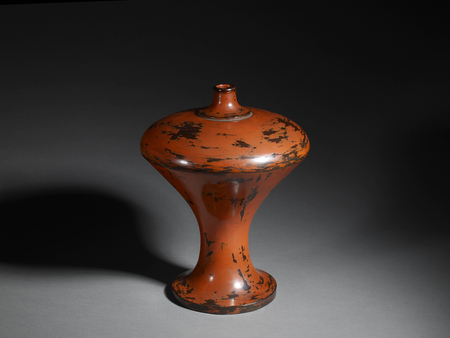Product Description
7241 A Negoro lacquer Heishi (ritual sake bottle)
Japan 17th/18th century Edo period
Dimensions: H.13” x W. 9½” (32.5cm x 24)
These ritual vessels, normally made in pairs, were placed at the altars of Shino shrines and used to make offerings of sake to the gods.
Heishi are constructed of three parts: the spout, shoulder and mid body, lower body and foot. All three parts are then assembled and turned on a lathe. Subsequently the bottle is given multiple coats of black lacquer before being finished entirely in red omitting the foot. Over time and constant use the red lacquer wears away to reveal the black ground beneath producing the elegant surface characteristic of Negoro.
Negoro lacquers are traditionally associated with the Negoro-ji Temple complex in Wakayama prefecture which was founded in the 12th century by monks of the Shingon Buddhist sect. The Negoro-ji grew enormously in power and wealth during the 15th and 16th centuries, and their warrior monks played a major part in the civil wars of the time before being crushed by the warlord Toyotomi Hideyoshi who almost entirely destroyed the complex in 1585.
While a number of pieces have survived in the general vicinity of the temple they do not, as a group, exhibit any great differences from the corpus of lacquers made subsequently in the Negoro manner, therefore it is difficult either to associate them with the temple or to establish a canon of ‘true’ Negoro pieces which can be
distinguished from those made elsewhere.





